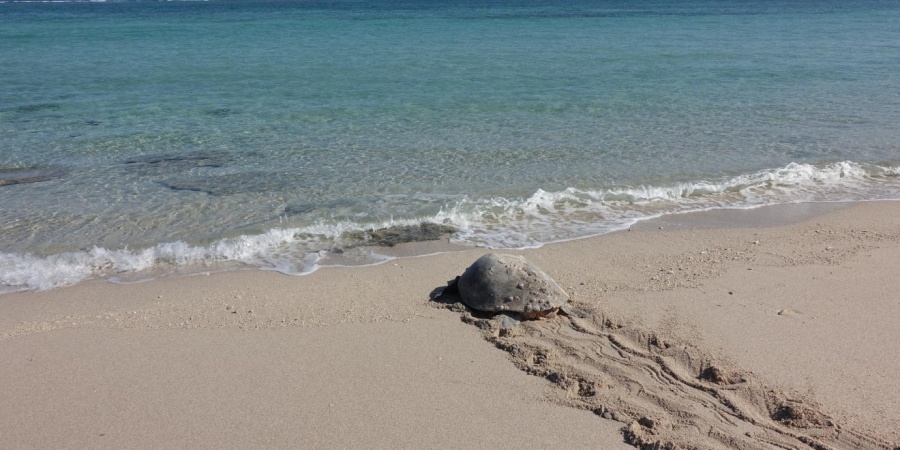
Western Australia’s longest running turtle tagging program has completed yet another successful year with a total of 626 marine turtle observations made over a 14-day survey period.
The Rosemary Island Turtle Monitoring Program started in 1986 and was driven by local community members and has been co-ordinated by the Department of Biodiversity, Conservation and Attraction’s Parks and Wildlife Service since 2002.
The program is run annually in October and involves staff from the Parks and Wildlife Service and volunteers working through the night, tagging and recording details of the female turtles who come ashore to lay their eggs.
Pilbara Marine Program Officer Suzie Glac said Rosemary Island and the Dampier Archipelago support a globally significant breeding population of critically endangered hawksbill turtles.
“Ninety-three per cent of the marine turtle observations we made during the program last year were of hawksbill turtles. Of the 267 individual hawksbills that we encountered, 105 were new turtles, and 162 were previously tagged in the program,” Ms Glac said.
“Female hawksbill turtles travel up to 2400 kilometres between their feeding and breeding grounds. However, hawksbills tracked from this program were found to make shorter, more local migrations. They only breed once every two to four years but during the breeding season they may nest up to six times, laying about 120 eggs in each clutch.”
“We monitor during peak hawksbill turtle nesting season, but we also encounter and record green and flatback turtles that come ashore to nest.”
For long lived species with complex life cycles such as the hawksbill turtle, long running projects such as the Rosemary Island Turtle Monitoring Program are essential to help detect trends in population dynamics and to assist in long term management of this globally threatened species.
The Rosemary program is supported by Rio Tinto, who also support the West Pilbara Turtle Program in partnership with the Parks and Wildlife Service.